You’ll experience dramatically improved headset comfort with breathable fabrics because they actively regulate temperature and prevent heat buildup during extended gaming or work sessions. These advanced materials create a moisture-wicking barrier that pulls sweat away from your skin through capillary action, reducing irritation and pressure points while promoting rapid evaporation. They’ll eliminate comfort-related distractions, allowing you to focus entirely on your audio experience. The following breakdown reveals exactly how this technology transforms your sessions.
The Science Behind Breathable Fabric Technology in Headsets
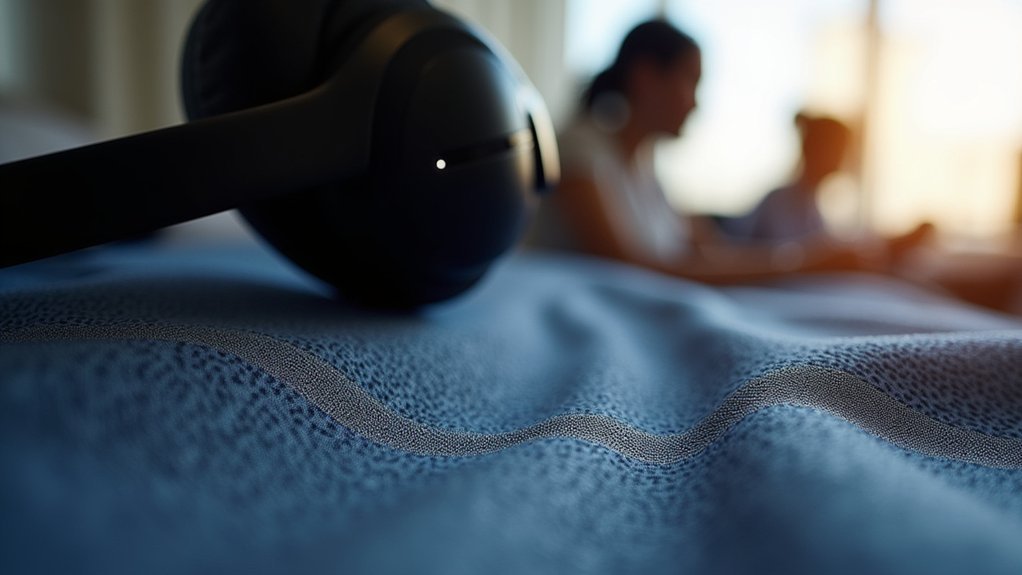
When you wear headsets for hours, heat and moisture become your biggest enemies. Breathable fabrics solve this problem through enhanced airflow technology that regulates temperature and prevents heat buildup during extended sessions.
These advanced materials work by promoting air circulation around your ears and head, creating a cooling effect that keeps you comfortable.
The technology integrates moisture-wicking properties that actively pull sweat away from your skin and promote evaporation. This prevents the sticky, uncomfortable feeling you’d experience with traditional padding materials.
Breathable fabrics also conform to your head’s unique shape, reducing pressure points that cause discomfort. By maintaining ideal temperature and moisture control, these materials eliminate the distractions that come from physical discomfort, allowing you to focus entirely on your audio experience.
How Moisture-Wicking Materials Prevent Sweat Buildup During Extended Use
While traditional headset padding traps moisture against your skin, moisture-wicking materials actively transport sweat away from the contact surface through capillary action.
This advanced fabric technology functions like breathable clothing, creating a dry barrier between your skin and the headset.
When you’re wearing headphones for hours, these moisture-wicking materials work continuously to prevent sweat accumulation that typically causes discomfort and skin irritation.
The fabrics promote rapid evaporation while maintaining airflow around your ears.
Advanced moisture-wicking fabrics accelerate sweat evaporation while ensuring consistent airflow circulation, keeping your ears cool and dry during extended wear.
Key benefits of moisture-wicking headset materials include:
- Reduced heat buildup during extended listening sessions
- Prevention of skin rashes and irritation from trapped moisture
- Enhanced comfort that maintains your focus on audio content
You’ll experience considerably improved comfort levels, allowing you to stay immersed in your music, games, or calls without constant adjustments or breaks.
Temperature Regulation Benefits for Long Gaming and Work Sessions
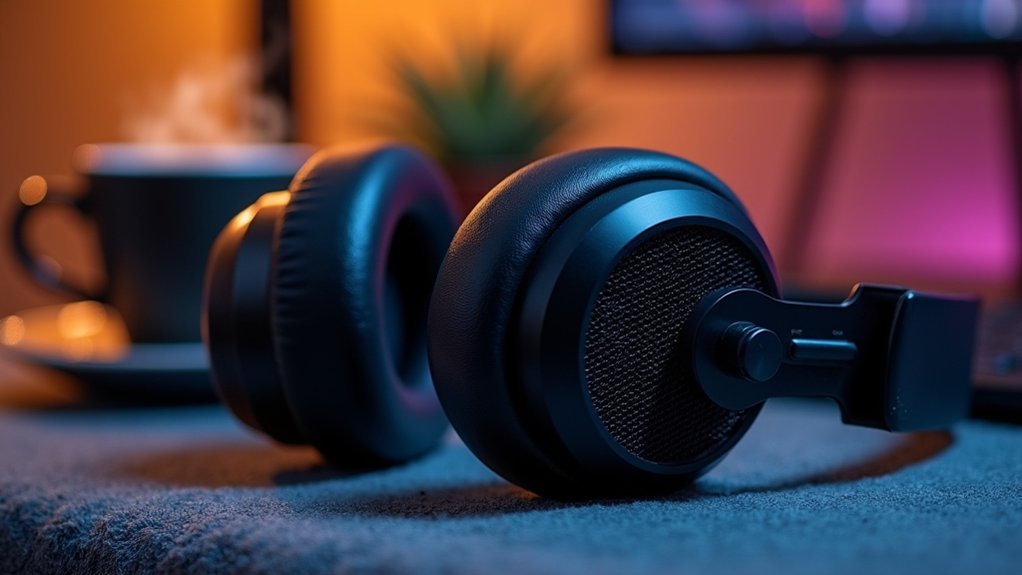
Beyond simply moving moisture away from your skin, breathable headset fabrics create an ideal thermal environment that keeps you comfortable during marathon gaming sessions and long workdays.
These materials promote steady airflow around your ears, preventing heat buildup that typically causes distraction and discomfort. When your headset absorbs moisture effectively while maintaining proper ventilation, you’ll experience enhanced temperature regulation that creates a balanced microclimate.
This means you can focus entirely on your game or conference call without constantly adjusting your headset or taking breaks due to overheating. The result is greatly improved productivity and performance, as thermal comfort directly impacts your ability to concentrate.
You’ll find yourself staying engaged longer without the nagging irritation that comes from poor temperature control.
Reducing Skin Irritation and Pressure Points With Advanced Textiles
When you wear headphones for extended periods, advanced textiles with moisture-wicking technology actively pull sweat away from your skin, preventing the buildup that leads to irritation and discomfort.
You’ll notice how these specialized fabrics create a barrier between your skin and the headset while maintaining breathability that traditional materials can’t match.
The softer texture of these advanced materials distributes pressure more evenly across contact points, eliminating those painful hotspots that develop during long gaming or work sessions.
Moisture-Wicking Technology Benefits
As moisture-wicking technology draws sweat away from your skin, it creates a barrier against the irritation and discomfort that plague extended headset sessions.
These advanced fabrics actively pull moisture away from contact points, preventing the accumulation that leads to rashes and hot spots. You’ll notice how breathable materials reduce sweat buildup while maintaining ideal temperature control around your ears and head.
Key benefits include:
- Enhanced air circulation that prevents overheating during long gaming or work sessions
- Reduced pressure point sensitivity through better heat management and dry contact surfaces
- Improved focus and immersion by eliminating comfort-related distractions
Fabric Texture Impact
While moisture-wicking technology addresses sweat management, the actual texture of your headset’s fabric plays an equally important role in preventing skin irritation and eliminating pressure points. Breathable fabrics with soft, friction-reducing textures create a barrier between your skin and hard headphone components. Memory foam and gel-infused materials distribute weight evenly, preventing concentrated pressure that causes discomfort during extended use.
| Material Type | Texture Benefit | Comfort Impact |
|---|---|---|
| Memory Foam | Pressure distribution | Reduces hotspots |
| Gel-Infused Padding | Cooling texture | Temperature regulation |
| Synthetic Fabrics | Smooth surface | Minimizes friction |
Advanced textiles specifically designed for headsets combine breathable properties with antimicrobial treatments, maintaining skin health while preventing bacterial growth that leads to rashes and irritation.
Comparing Natural Vs Synthetic Breathable Materials for VR Applications
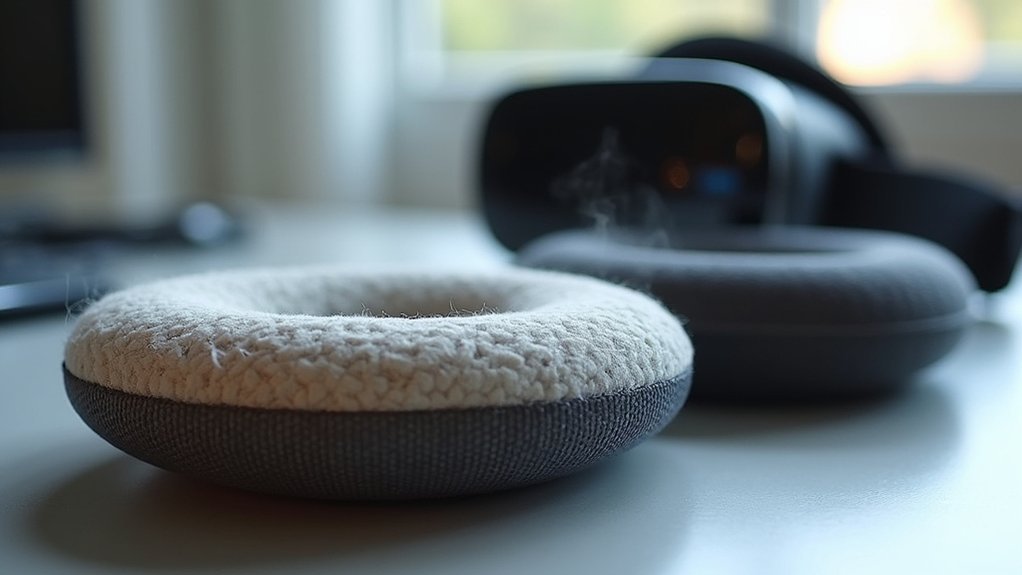
When you’re choosing between natural and synthetic fabrics for your VR headset, you’ll find that natural fibers like cotton and merino wool excel at heat management through superior airflow and temperature regulation.
Synthetic materials such as polyester and nylon offer advanced moisture-wicking properties that pull sweat away from your skin more effectively than most natural options.
Your VR session duration becomes the deciding factor—shorter sessions favor natural fibers’ comfort, while extended gaming sessions benefit from synthetics’ superior moisture management capabilities.
Natural Fiber Heat Management
Most VR enthusiasts don’t realize how dramatically fabric choice affects their comfort during extended gaming sessions. Natural fibers like cotton and linen deliver superior heat management that’ll keep you comfortable during marathon VR sessions.
These materials regulate your body temperature more effectively than synthetic alternatives, preventing the overheating that can ruin your immersion.
Here’s why natural fibers excel at heat management:
- Open fiber structure allows maximum air circulation around your skin
- Superior moisture evaporation prevents sweat buildup that synthetic materials trap
- Temperature regulation keeps you cool during intense gaming without skin irritation
When you’re exploring virtual worlds for hours, breathable natural fibers become your best friend.
They’ll maintain ideal comfort levels while synthetic materials leave you overheated and distracted from your gaming experience.
Synthetic Moisture Wicking Properties
Although natural fibers offer excellent heat management, synthetic materials engineered with moisture-wicking technology present compelling advantages that deserve serious consideration for VR applications. You’ll find that polyester and nylon fabrics actively draw sweat away from your skin, unlike cotton which absorbs moisture but doesn’t disperse it effectively.
| Property | Natural Fibers | Synthetic Materials |
|---|---|---|
| Moisture Management | Absorbs but retains | Wicks and disperses |
| Drying Speed | Slow to moderate | Rapid |
| Weight | Heavier when wet | Lightweight always |
| Antimicrobial | Limited | Often treated |
| Temperature Control | Good | Superior airflow |
These breathable synthetic fabrics regulate temperature better through enhanced air circulation, preventing overheating during extended sessions. They’re also lighter, reducing headset weight and neck strain while offering antimicrobial treatments that minimize odor buildup.
VR Session Duration Impact
Extended VR sessions reveal dramatic differences between natural and synthetic breathable materials, with fabric choice directly determining how long you can comfortably wear your headset.
Research demonstrates that breathable fabrics greatly influence session durations, with natural fibers like cotton and linen outperforming synthetic alternatives.
When you’re using VR headsets with natural breathable fabrics, you’ll experience:
- 30% longer comfortable sessions compared to synthetic liner materials
- Superior heat dissipation that prevents overheating during intense gameplay
- Reduced sweat buildup that eliminates distraction and maintains focus
Natural materials excel at thermal regulation, allowing better airflow and moisture absorption.
This enhanced comfort translates directly into extended usage periods, enabling deeper immersion without the interruption of discomfort that synthetic materials typically cause during prolonged VR experiences.
The Impact of Fabric Choice on Overall Headset Hygiene and Maintenance
When you select breathable fabrics for your headset’s ear pads, you’re making a decision that directly impacts both hygiene and long-term maintenance. These materials enhance airflow, preventing sweat buildup that creates breeding grounds for bacteria and unpleasant odors.
| Feature | Breathable Fabrics | Non-Breathable Options |
|---|---|---|
| Moisture Control | Excellent wicking capability | Poor moisture retention |
| Cleaning Ease | Repels dirt and moisture | Absorbs contaminants |
| Replacement Frequency | Less frequent | More frequent |
Moisture-wicking materials keep your ear pads dry, extending your headset’s lifespan by preventing material degradation. You’ll find cleaning easier since breathable fabrics naturally repel moisture and dirt. This choice also reduces skin irritation during extended use, particularly beneficial if you have sensitive skin. Ultimately, you’ll save money through reduced replacement costs while maintaining superior hygiene.
Performance Enhancement Through Optimal Airflow and Ventilation Design
Beyond maintaining cleanliness, breathable fabrics actively boost your headset’s performance by creating an ideal airflow system that keeps you comfortable during marathon gaming sessions or long work calls.
These materials allow airflow around your ears, preventing the heat buildup that typically causes distraction and fatigue.
Strategic ventilation design transforms your listening experience through several key benefits:
- Temperature regulation – Proper airflow prevents overheating and sweat accumulation
- Pressure point reduction – Enhanced breathability minimizes uncomfortable contact points
- Moisture management – Quick-wicking materials keep your ears dry and comfortable
When your headset doesn’t trap heat or moisture, you’ll maintain focus on what matters most.
This supreme ventilation helps reduce physical distractions, allowing you to stay immersed in your audio experience without constantly adjusting your headset.
Frequently Asked Questions
What Are the Advantages of Breathable Fabric?
You’ll experience better temperature regulation and moisture control with breathable fabrics. They prevent heat buildup, wick sweat away, reduce skin irritation, and keep you comfortable during extended wear without slipping or discomfort.
What Is the Difference Between Breathable and Non Breathable Fabric?
Breathable fabrics feature loose weaves that allow air circulation and moisture wicking, keeping you dry and cool. Non-breathable fabrics trap heat and sweat against your skin, causing discomfort during extended use.
Why Is Fabric Choice Important?
Your fabric choice directly affects headset comfort during extended use. Non-breathable materials trap heat and moisture, causing irritation and distractions. You’ll experience better focus, reduced pressure points, and improved listening sessions with proper selection.
What Fabric Is Best for Breathability?
You’ll find merino wool offers the best breathability for headsets, effectively wicking moisture while regulating temperature. Cotton and linen also work well, providing excellent air circulation that keeps you comfortable during extended wear.

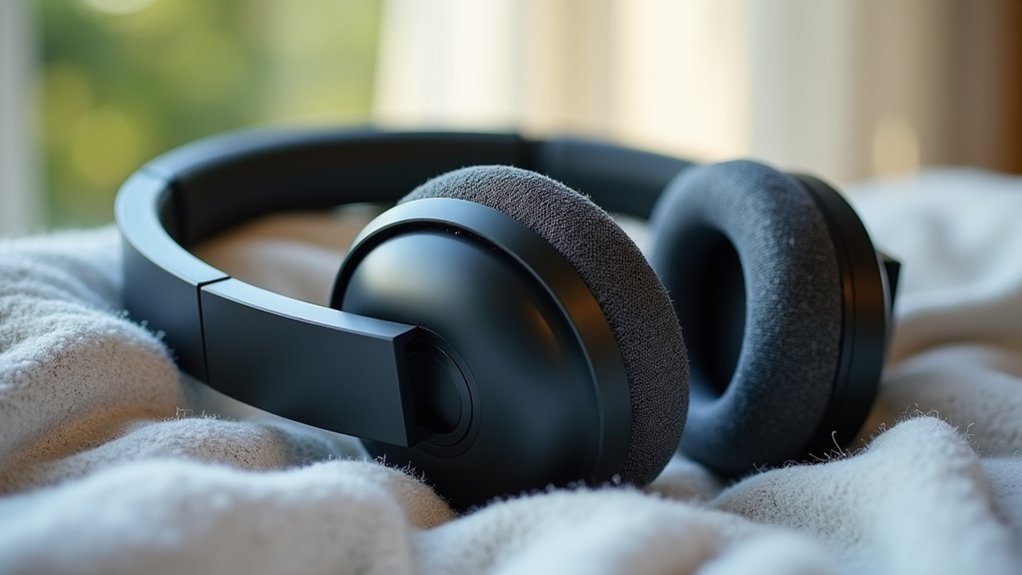


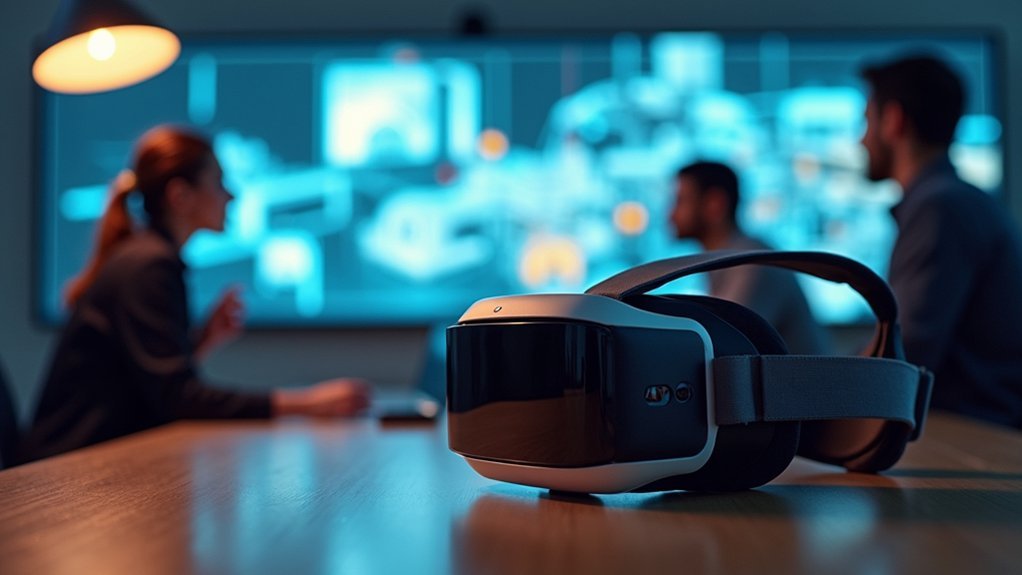
Leave a Reply